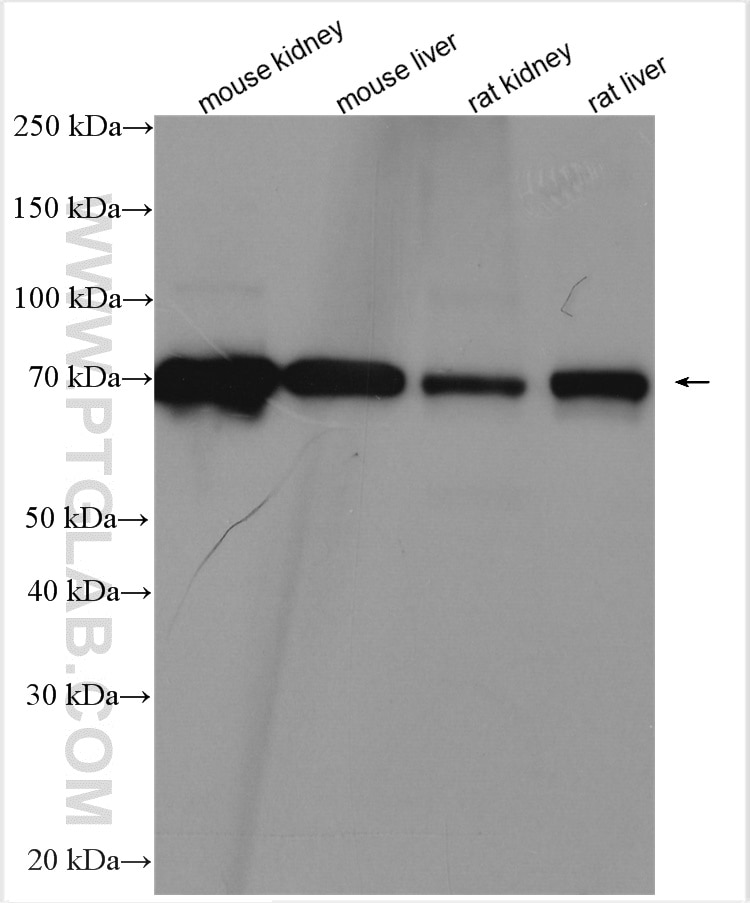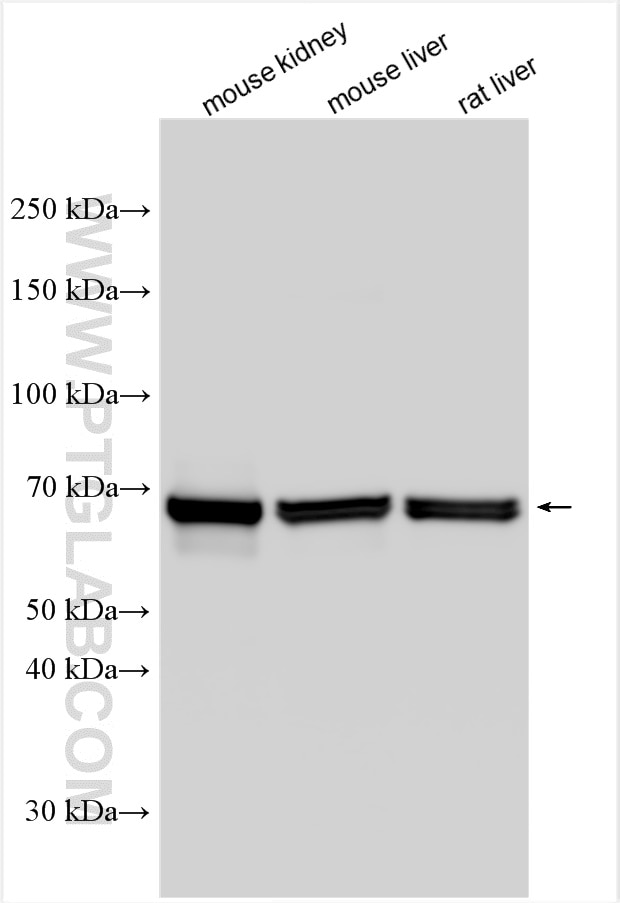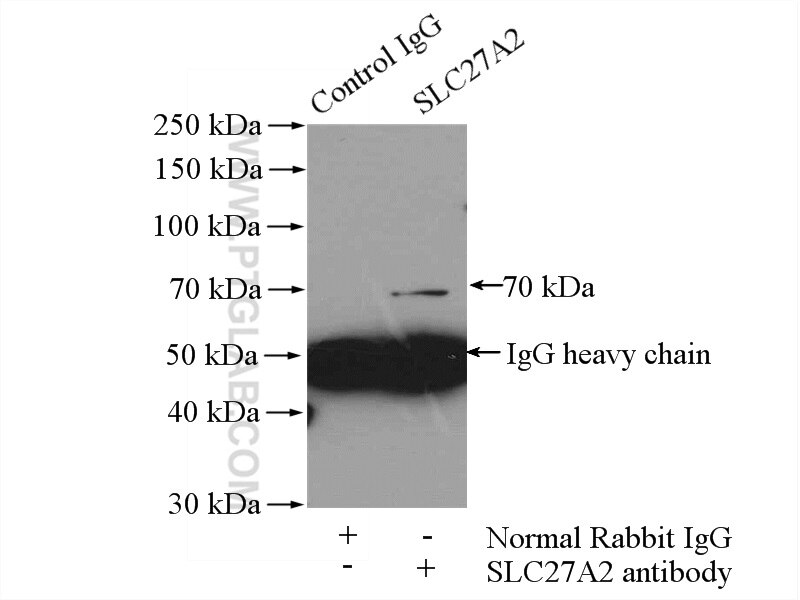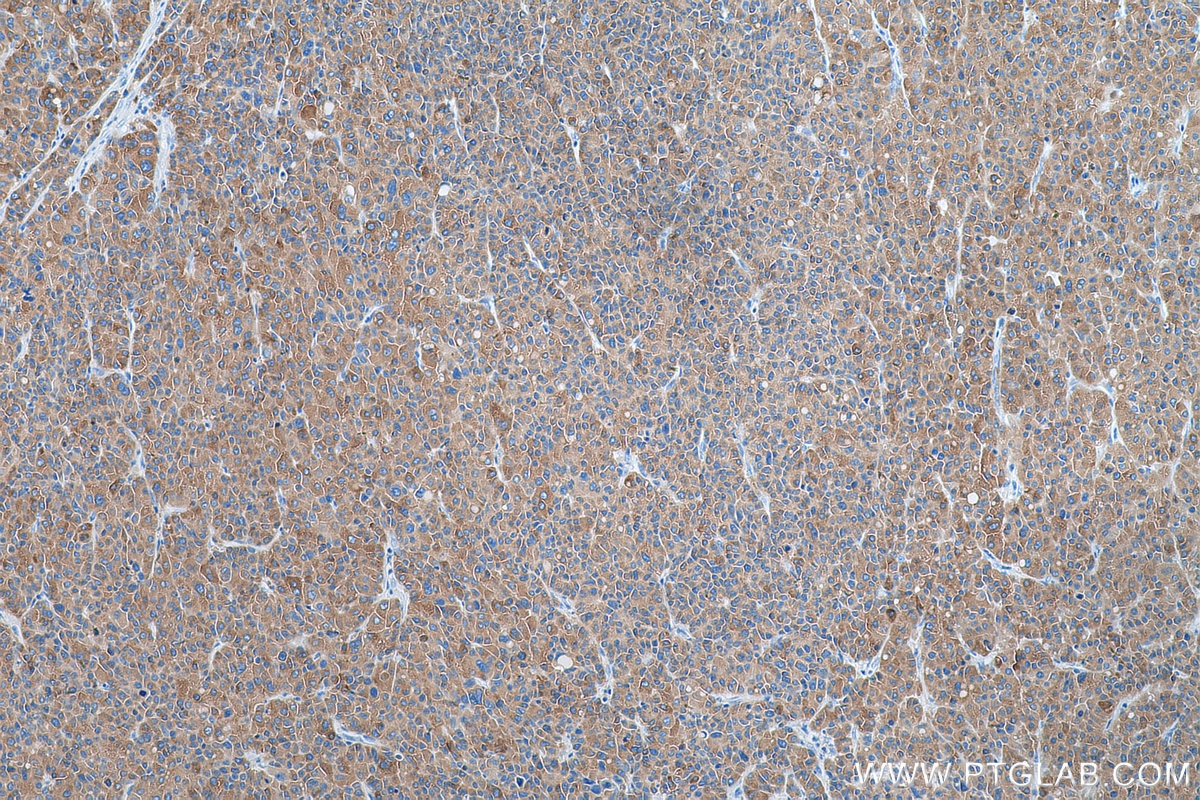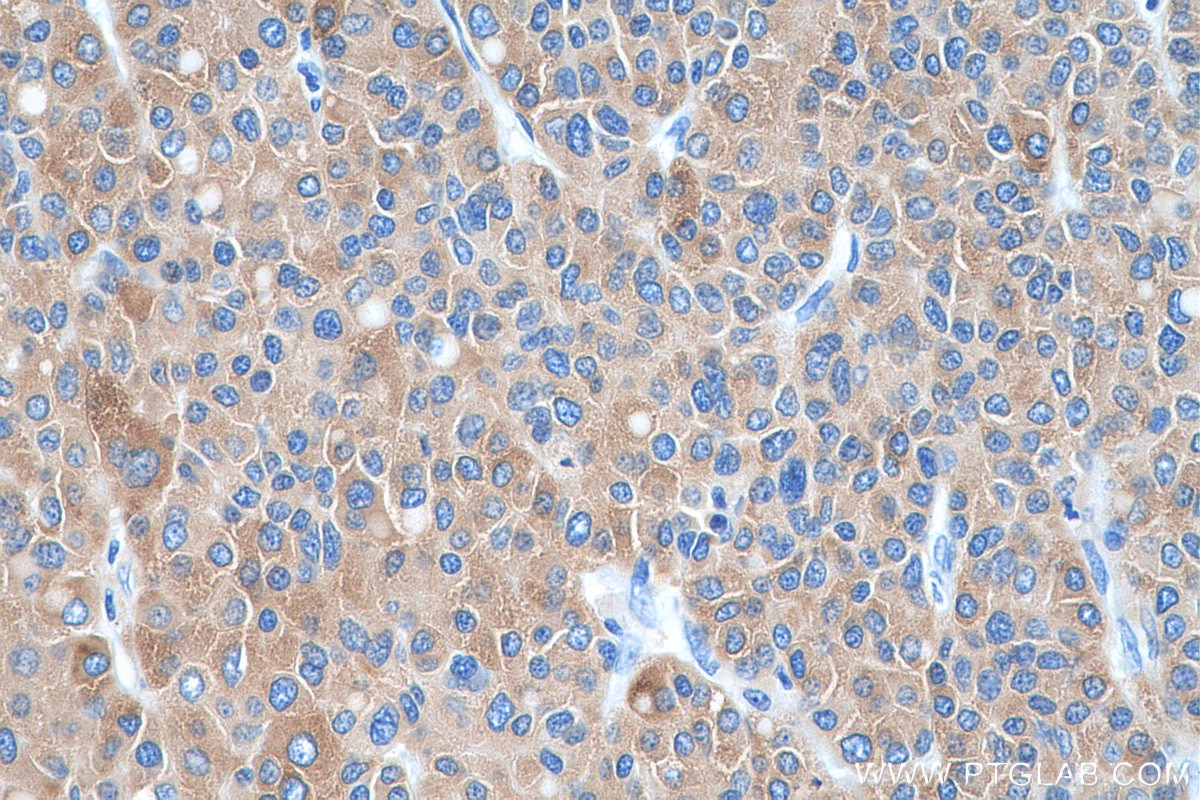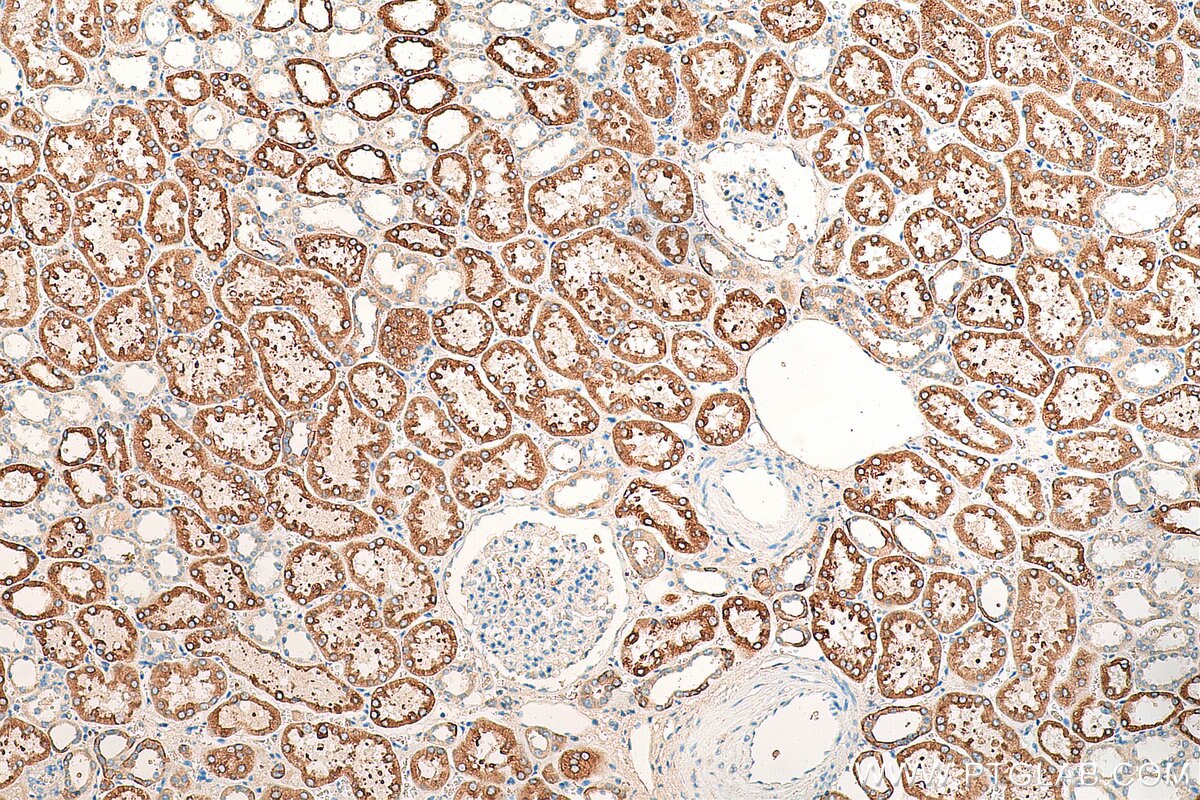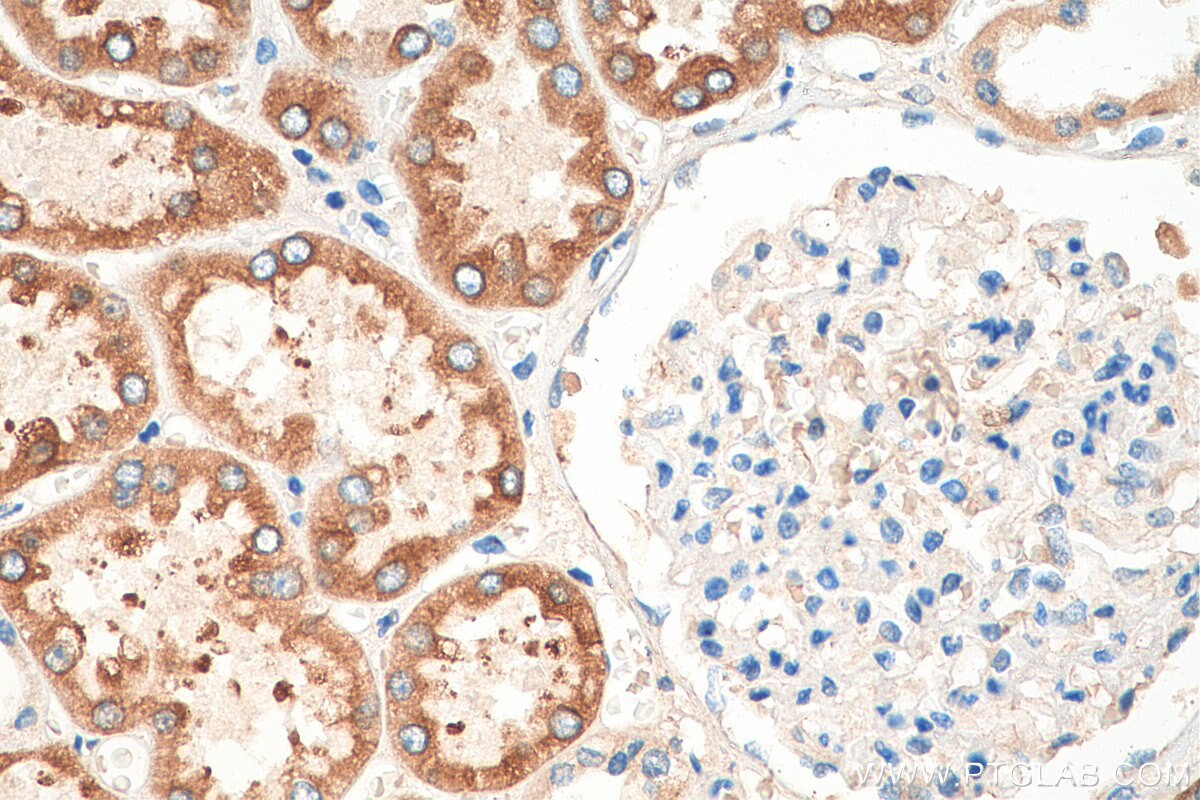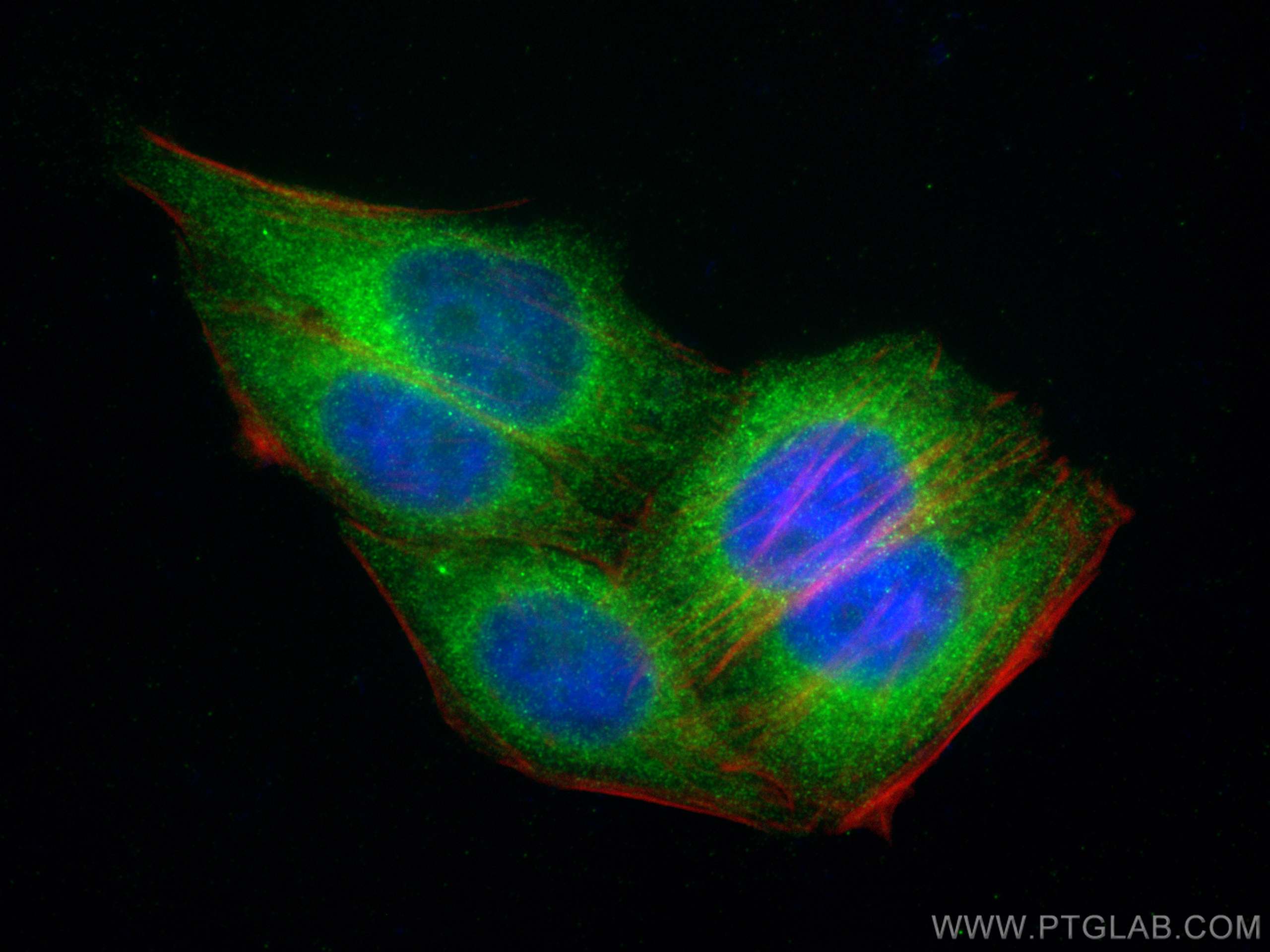Tested Applications
| Positive WB detected in | mouse kidney tissue, mouse liver, rat kidney, rat liver, mouse liver tissue, rat liver tissue |
| Positive IP detected in | HepG2 cells |
| Positive IHC detected in | human liver cancer tissue, human kidney tissue Note: suggested antigen retrieval with TE buffer pH 9.0; (*) Alternatively, antigen retrieval may be performed with citrate buffer pH 6.0 |
| Positive IF/ICC detected in | HepG2 cells |
Recommended dilution
| Application | Dilution |
|---|---|
| Western Blot (WB) | WB : 1:2000-1:16000 |
| Immunoprecipitation (IP) | IP : 0.5-4.0 ug for 1.0-3.0 mg of total protein lysate |
| Immunohistochemistry (IHC) | IHC : 1:250-1:1000 |
| Immunofluorescence (IF)/ICC | IF/ICC : 1:50-1:500 |
| It is recommended that this reagent should be titrated in each testing system to obtain optimal results. | |
| Sample-dependent, Check data in validation data gallery. | |
Published Applications
| KD/KO | See 3 publications below |
| WB | See 39 publications below |
| IHC | See 4 publications below |
| IF | See 6 publications below |
| CoIP | See 1 publications below |
Product Information
14048-1-AP targets FATP2 in WB, IHC, IF/ICC, IP, CoIP, ELISA applications and shows reactivity with human, mouse, rat samples.
| Tested Reactivity | human, mouse, rat |
| Cited Reactivity | human, mouse, rat |
| Host / Isotype | Rabbit / IgG |
| Class | Polyclonal |
| Type | Antibody |
| Immunogen | FATP2 fusion protein Ag5217 Predict reactive species |
| Full Name | solute carrier family 27 (fatty acid transporter), member 2 |
| Calculated Molecular Weight | 567 aa, 65 kDa |
| Observed Molecular Weight | 70 kDa |
| GenBank Accession Number | BC057770 |
| Gene Symbol | FATP2/SLC27A2 |
| Gene ID (NCBI) | 11001 |
| RRID | AB_2239416 |
| Conjugate | Unconjugated |
| Form | Liquid |
| Purification Method | Antigen affinity purification |
| UNIPROT ID | O14975 |
| Storage Buffer | PBS with 0.02% sodium azide and 50% glycerol pH 7.3. |
| Storage Conditions | Store at -20°C. Stable for one year after shipment. Aliquoting is unnecessary for -20oC storage. 20ul sizes contain 0.1% BSA. |
Background Information
FATP2 is a member of the FATP family which functions in lipid and bile metabolism. It is a 70-kDa protein predominantly expressed in liver and kidney. Kidney FATP2 is localized exclusively to proximal tubule epithelial cells along the apical but not the basolateral membrane, and regulates lipoapoptosis. FATP2 is involved in metabolism-related diseases including nonalcoholic fatty liver disease (NAFLD) and type 2 diabetes mellitus (T2DM), and is a potential clinical biomarker and therapeutic target.
Protocols
| Product Specific Protocols | |
|---|---|
| WB protocol for FATP2 antibody 14048-1-AP | Download protocol |
| IHC protocol for FATP2 antibody 14048-1-AP | Download protocol |
| IF protocol for FATP2 antibody 14048-1-AP | Download protocol |
| IP protocol for FATP2 antibody 14048-1-AP | Download protocol |
| Standard Protocols | |
|---|---|
| Click here to view our Standard Protocols |
Publications
| Species | Application | Title |
|---|---|---|
Hepatology Letter to the editor: Adipose lipolysis is important for ethanol to induce fatty liver in the NIAAA murine model of chronic and binge ethanol feeding | ||
Hepatology Adipose lipolysis is important for ethanol to induce fatty liver in the National Institute on Alcohol Abuse and Alcoholism murine model of chronic and binge ethanol feeding. | ||
Environ Pollut Hepatotoxicity induced in rats by chronic exposure to F-53B, an emerging replacement of perfluorooctane sulfonate (PFOS) | ||
EMBO Rep Lin28 enhances de novo fatty acid synthesis to promote cancer progression via SREBP-1. | ||
Anal Chem Ionic Liquid-Based Extraction System for In-Depth Analysis of Membrane Protein Complexes. | ||
Food Funct Monounsaturated fatty acid-enriched olive oil exacerbates chronic alcohol-induced hepatic steatosis and liver injury in C57BL/6J mice |
